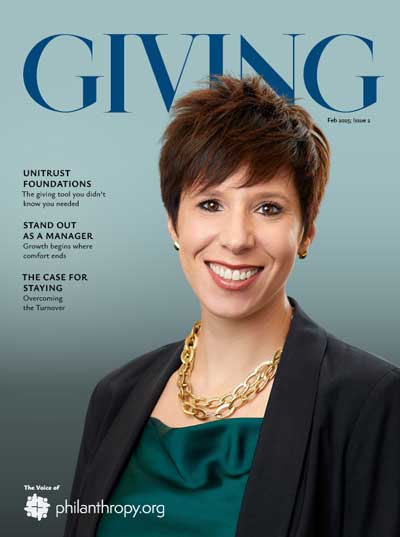Wealth isn’t a number—it’s a mindset. And some are thinking too small.
You’re probably closer to being a millionaire than a millionaire is to becoming a billionaire.
Yet you’re still thinking small.
Let me prove it:
- One million seconds = 11 days
- One billion seconds = 32 years
That’s not just a clever comparison—it’s the kind of mindset shift many need.
The Wealth Delusion That’s Keeping You Back
At a recent AFP event, I asked a room of 35 seasoned professionals what income qualifies someone for the top 1% in America.
Their guesses? From $5 million to $50 billion. Significantly off the mark. Almost every single one.
The actual answer? $464,000 per year. Only one person in the room nailed it.
This isn’t just a minor misconception—it’s a significant professional blind spot. If you fundamentally misunderstand wealth at this level, your high-net-worth donors can smell it. The conversation is over before you’ve opened your mouth.
This is a serious professional blind spot.
Viken Tweet
Stop Lumping the Wealthy Together
They’re not all playing the same game. Let’s consider some actual numbers:
- 56 million millionaires globally—23 million in the U.S. alone
- Only 2,700 billionaires exist worldwide
Huge difference. Yet we keep using “wealthy” and “rich” interchangeably. But without understanding the spectrum of wealth, slogans like “tax the rich” become emotionally satisfying—yet strategically empty.
And here’s the irony: We live in a cultural moment where we’re told not to generalize—don’t lump people together by race, gender, or identity. Fair enough.
But when it comes to wealth? Suddenly, sweeping generalizations are not just accepted—they’re applauded. It’s worth asking: Is this about economics… or is it personal prejudice dressed up as virtue?
You can’t raise money from people you fundamentally misunderstand. Discomfort leaks into your tone, your posture, even your ask. Donors sense it. And they disengage—long before you ever know why.
Here’s what you’re missing:
-
A $1.2 million net worth (often just a paid-off home and some retirement savings) is playing defense—worried about medical costs and running out of money.
-
A $50 million net worth is playing a different sport—working with wealth managers and thinking about preserving capital through market cycles.
-
A $500 million net worth isn’t even in the same universe—they’re thinking about dynasty trusts, family offices, and multi-generational wealth that outlasts markets, dynasties, even governments.
If you’re approaching these donors with the same pitch, you’re not just missing nuance—you’re broadcasting your naivety.
To a high-net-worth donor, a one-size-fits-all approach doesn’t feel insulting. It feels amateur.
Hidden Blind Spots
It’s not just about misunderstanding wealth—it’s about how personal discomfort quietly shapes professional behavior.
Our recent survey revealed some hard truths:
- 72% of fundraisers admitted to a blind spot when engaging with donors of opposing political beliefs
- 25% said they feel discomfort speaking with individuals of great wealth
- A growing number expressed ethical objections to the sources of major gifts—rejecting donors outright based on perceived ideology
- And 6% acknowledged discomfort engaging with the opposite sex in donor relationships
These aren’t harmless quirks. They’re costing nonprofits millions—in missed gifts, strained relationships, and untapped legacy potential.
Some of this discomfort isn’t innate—it’s absorbed. In a media environment where outrage sells, it’s easy to internalize narratives that frame wealth as inherently unethical or politically oppositional. But philanthropy doesn’t flourish in that frame. It demands nuance.
Meanwhile, high-net-worth individuals expect something very different: strategic conversations, tailored engagement, and respectful alignment—not judgment, generalization, or avoidance.
No matter how noble the mission, failing to bridge the psychological and ideological gap between nonprofits and their donors slowly erodes the very outcomes we’re fighting for.
The Fundraisers Who Generate Transformational Results Think Differently
Fundraisers who embrace abundance don’t just raise more. They operate in a different league entirely.
- They ask questions that cut to the core.
- They build trust at speed.
- They speak wealth fluently—not as tourists.
This language isn’t about jargon—it’s about confidence. It’s grounded in value creation, not neediness. It assumes partnership, not charity.
Most fundraisers are closer to significant wealth than they realize—it’s often just a shift in mindset that unlocks new possibilities.
There are plenty of tools that connect your donors to your mission at a deeper level than your annual giving ever will.
Viken Tweet
Legacy Giving: The Goldmine Most Small Nonprofits Are Too Intimidated to Tap
Legacy giving isn’t just for Harvard and Mayo Clinic. It’s the greatest untapped asset for organizations of every size.
The reality? Many believe they need a legal team and fancy financial tools to access planned giving.
This simply isn’t true.
Today’s tools like the Planned Giving Micro Website and LegacyPlanner™ let even tiny teams launch sophisticated planned giving in days.
- No legal headaches.
- No barriers to entry.
- No dedicated staff required.
These aren’t luxuries—they’re leverage. They connect donors to your mission at a deeper level than your annual giving ever will.
Legacy giving is where mindset meets mission—and transforms your organization’s future.
Final Thought: Stack Your Thinking Higher
Let’s circle back.
If you stacked $100 bills one on top of the other:
- $1 million reaches just under 4 feet—about the height of your kitchen counter.
- $1 billion towers 3,583 feet—nearly three times the height of the Empire State Building.
That’s the difference in scale we’re dealing with.
But the real gap isn’t in the money. It’s in how you think about money.
You may not be broke—but if you’re still thinking like you are, your fundraising is permanently capped.
Until you begin seeing wealth clearly—embracing it, understanding it, and speaking its language fluently—you’ll keep stacking dollars 4 feet high… when you could be reaching the sky.
Stop thinking small. Close the mindset gap. Your mission deserves better.
“It’s not hard to make decisions when you know what your values are. There’s no shortage of money, only a shortage of imagination.”
There is no shortage of money. There is a shortage of imagination.
Walt Disney Tweet






